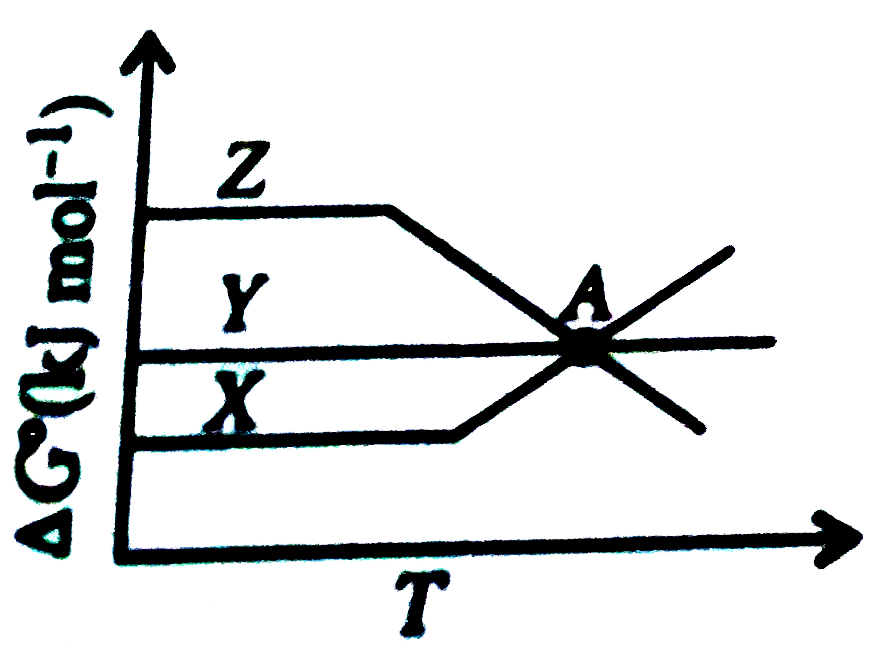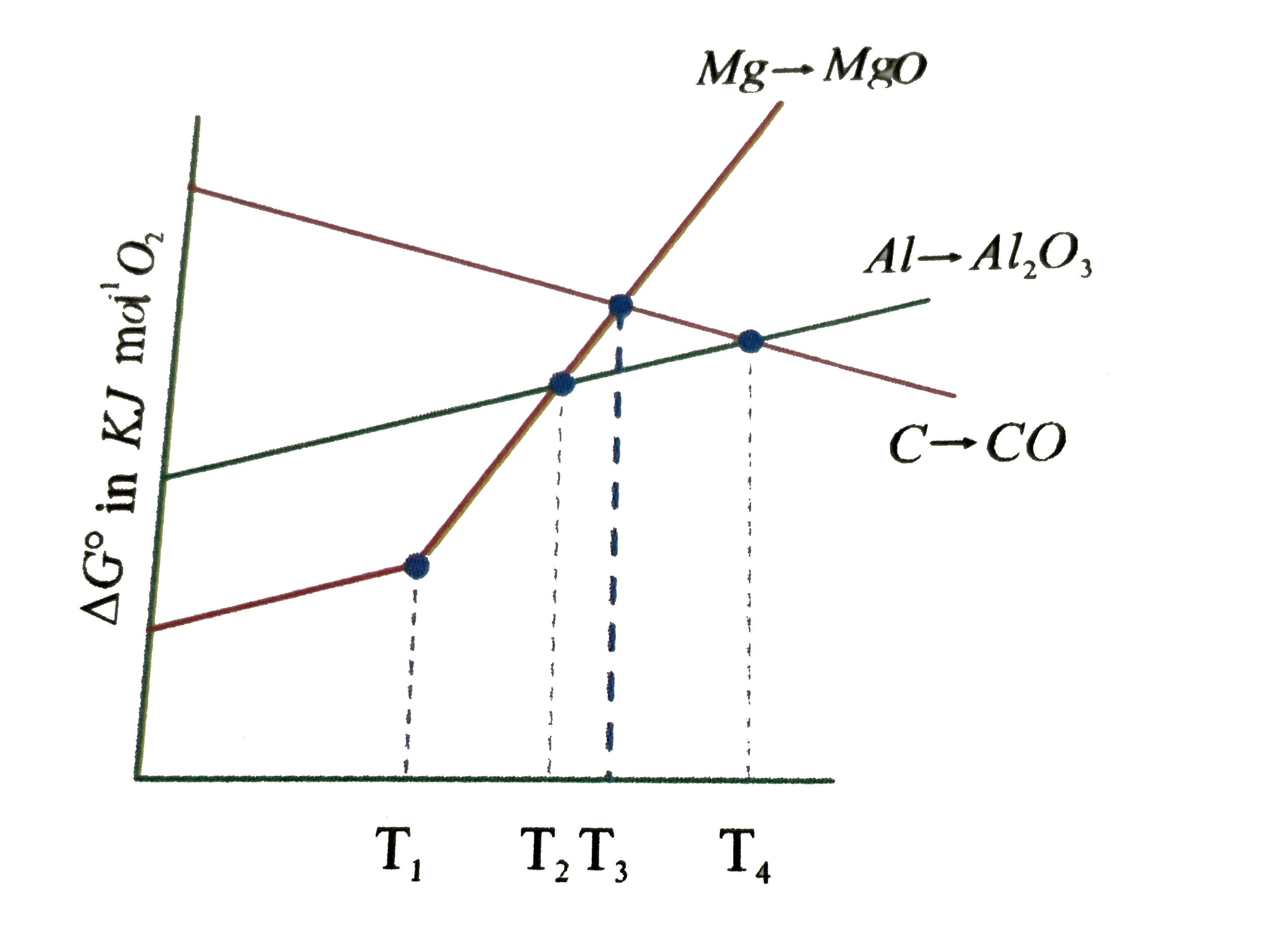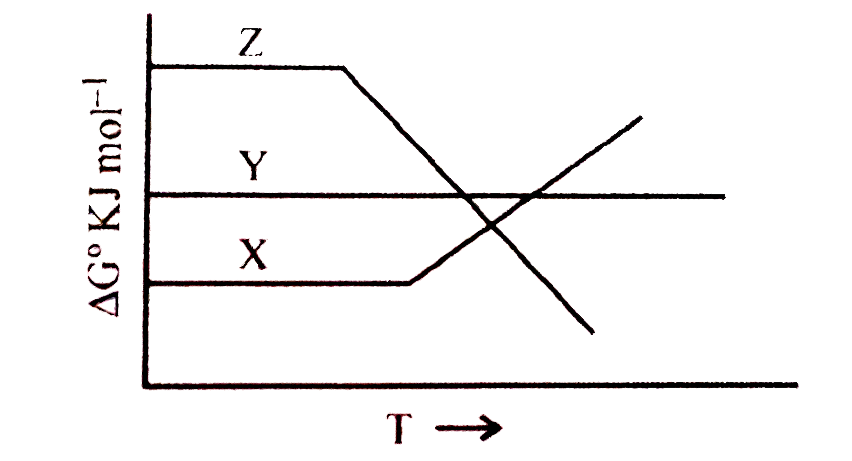In the following Ellingham diagram ,X, Y and Z represent graphs for metal oxides . Select the correct option before point A.

A
Y will reduce oxide of Z
B
Y will reduce oxide of X.
C
Z will reduce oxide of Y
D
Z will reduce oxide of Y
Text Solution
The correct Answer is:A
of Y is less than Z.
|
Topper's Solved these Questions
- GENERAL PRINCIPLES AND PROCESSES OF ISOLATION OF ELEMENTSBOOK - NCERT FINGERTIPSCHAPTER - GENERAL PRINCIPLES AND PROCESSES OF ISOLATION OF ELEMENTSEXERCISE - NCERT Exemplar
10 Videos
- GENERAL PRINCIPLES AND PROCESSES OF ISOLATION OF ELEMENTSBOOK - NCERT FINGERTIPSCHAPTER - GENERAL PRINCIPLES AND PROCESSES OF ISOLATION OF ELEMENTSEXERCISE - NCERT EXEMPLAR PROBLEMS
3 Videos
- GENERAL PRINCIPLES AND PROCESSES OF ISOLATION OF ELEMENTSBOOK - NCERT FINGERTIPSCHAPTER - GENERAL PRINCIPLES AND PROCESSES OF ISOLATION OF ELEMENTSEXERCISE - Higher Order Thinking Skills
6 Videos
- ELECTROCHEMISTRYBOOK - NCERT FINGERTIPSCHAPTER - ELECTROCHEMISTRYEXERCISE - Assertion And Reason
15 Videos
- HALOALKANES AND HALOARENESBOOK - NCERT FINGERTIPSCHAPTER - HALOALKANES AND HALOARENESEXERCISE - Assertion And Reason
15 Videos
Similar Questions
Knowledge Check
Select the correct option for the following graph :
 AT1>T2>T3BT1=T2=T3CT1<T2<T3DT1>T2<T3
AT1>T2>T3BT1=T2=T3CT1<T2<T3DT1>T2<T3Ellingham diagram is given below for the formation of some oxides. The select the correct combination
 ABelow T2.Al2O3+3Mg®MgO+2Al,DG=−veBBelow T3,MgO+CO®CO2+Mg,DG=−veCAbove T4,Al2O3+3CO®2Al+3CO2DG=−veDBelowT1 MgO is in liquid state
ABelow T2.Al2O3+3Mg®MgO+2Al,DG=−veBBelow T3,MgO+CO®CO2+Mg,DG=−veCAbove T4,Al2O3+3CO®2Al+3CO2DG=−veDBelowT1 MgO is in liquid stateEllingham diagram is given below for the formation of some oxides. Then select the correct combination
 ABelow
ABelow
T2Al2O3+3Mg→3MgO+2Al,ΔG=−veBBelow
T3MgO+CO→CO2+Mg,ΔG=−veCBelow
T3MgO+CO→CO2+Mg,ΔG=−veDall of the above
Select the correct option for the given diagram.

View SolutionSelect the correct option for the given graphs

View Solution
Choose the correct option for X, Y and Z.
View SolutionEllingham diagram is given below for the formation of some oxides. The select the correct combination

View SolutionIn Ellingham diagram, the slope of the curve of the formation metal oxide:
View Solution

